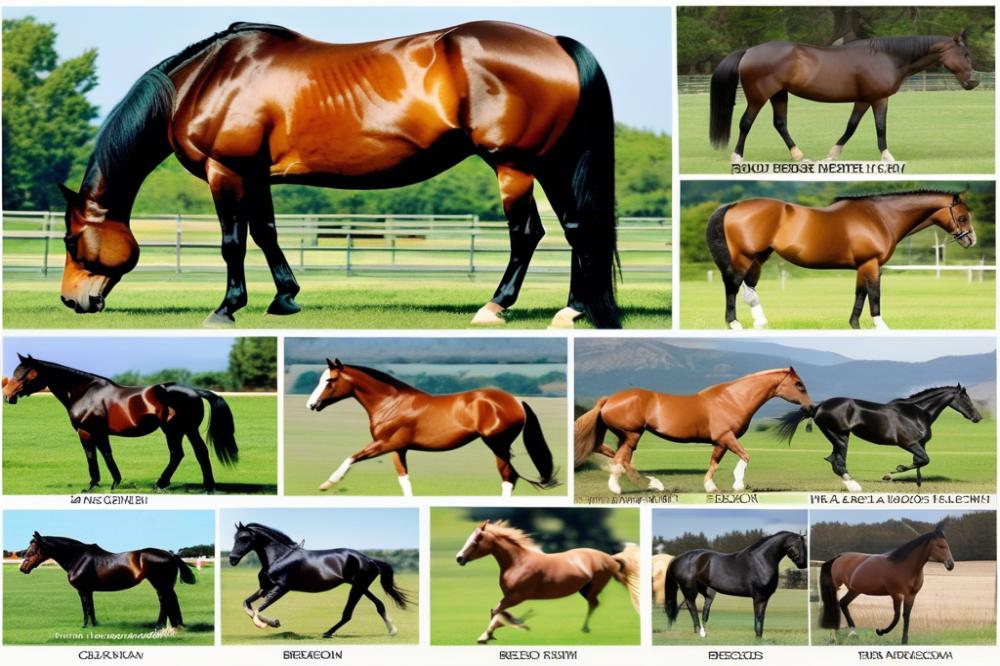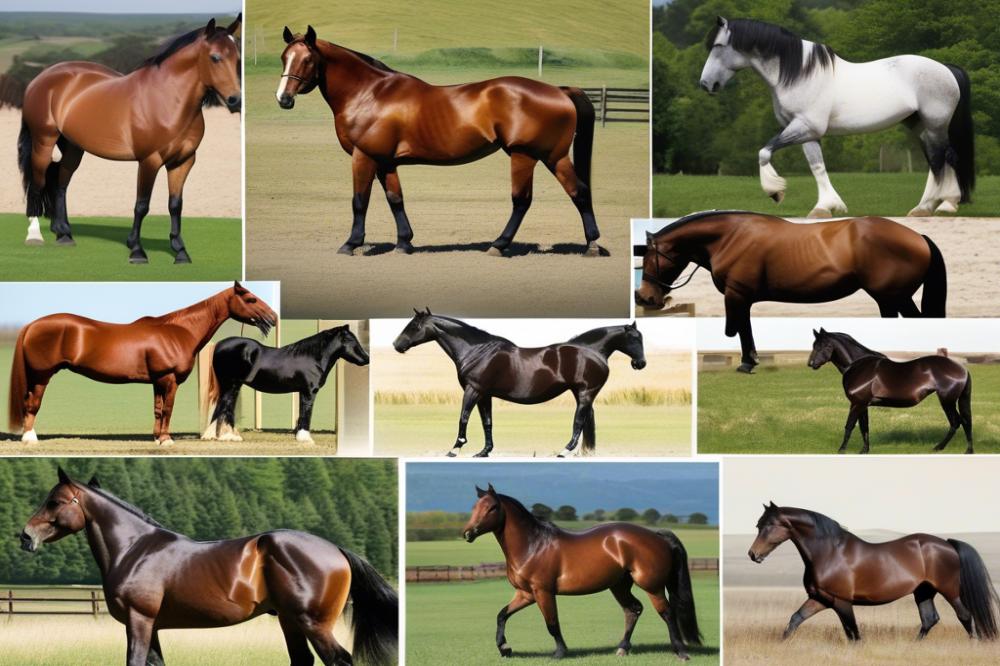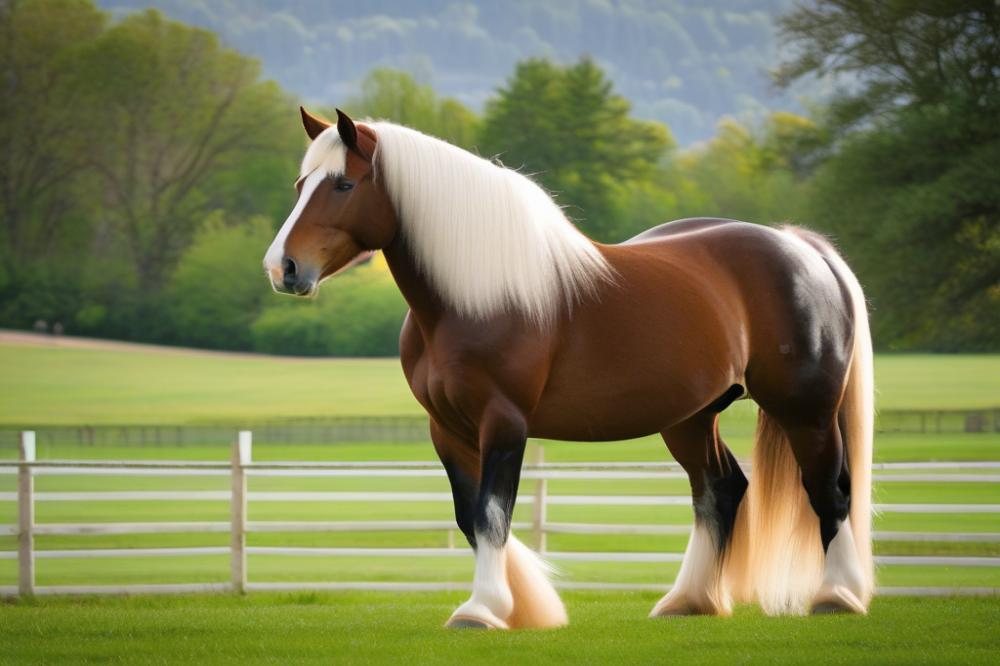Strength in Width: The Widest and Most muscular horse breeds Ever Bred
The world of equestrian breeds is filled with diversity, but few categories capture the imagination like muscular horse breeds. These animals stand out not only for their size but also for their power. Horse enthusiasts and breeders alike often seek out these strong and robust animals for various purposes. Their impressive physical traits represent the pinnacle of strength in the equestrian world.
Characteristics like muscle density, height, and overall build can significantly impact a horse’s performance, capabilities, and aesthetic appeal. wide horse breeds, in particular, exhibit remarkable strength and stability. Such traits are crucial, especially in equestrian sports or heavy work. Understanding these equine features helps riders and breeders make informed choices about the horses they select.
This article aims to explore the largest and strongest breeds in detail. We will delve into their physical traits, historical importance, and unique roles in our society. Readers can expect to gain insight into why these horses are revered for their robust builds and versatility. Join us as we embark on a journey through their fascinating world.
Understanding Muscular Horse Breeds

Muscular horse breeds are known for their strength and size. These animals often have a broad build and impressive muscles. Features like bulky necks and powerful haunches define their appearance. Additionally, many of these breeds are used for heavy work, such as pulling or farm tasks.
The Concept of Horse Conformation
Conformation refers to a horse’s body structure and shape. It plays a big role in how a horse functions and performs. Well-proportioned horses are typically more capable in various activities. Muscular breeds usually exhibit specific traits like deep chests and strong legs. Each feature contributes to their overall power and capability. Understanding this concept helps in appreciating why certain horses excel in certain tasks.
Comparison to Lighter and More Agile Breeds
When comparing muscular breeds to lighter types, clear differences emerge. Lighter horses often possess more agility and speed. These breeds are built to move quickly and change direction with ease. In contrast, muscular horses prioritize strength and stability over speed. They can carry heavier loads and endure strenuous work. Each type serves different purposes, making them valuable in unique ways. Riders and trainers choose breeds based on their specific needs.
draft horses: The Strongest Contenders

draft horses have played a vital role in agriculture and transportation throughout history. These majestic animals are known for their incredible strength and size. Many farmers relied on them for heavy farm work. Their ability to pull massive loads made them essential in the days before machines took over.
Key Breeds
Among the most notable draft breeds are the Belgian, Clydesdale, Percheron, and Shire. Belgians are often recognized for their muscular build and calm demeanor. These horses usually weigh around 1,800 pounds or more. Clydesdales, associated with the famous Budweiser commercials, are known for their impressive height and distinctive feathering on their legs. They can reach up to 18 hands tall. Percherons are versatile and exhibit a remarkable combination of power and grace. Their history dates back to medieval France, where they were bred for strength. On the other hand, Shires are the tallest of the group, with some individuals towering over 19 hands. Their large stature and powerful frame make them highly sought after.
Physical Traits
Physical traits are crucial when it comes to understanding draft horses’ strength. A broad chest provides them with exceptional lung capacity and power. Their strong legs are designed to support heavy weights, allowing them to pull and carry loads effectively. Additionally, thick necks often help with balance and stability. Muscles are well-defined, contributing to their impressive endurance. Overall, draft horses are built to work hard and do so with remarkable efficiency.
The Role of Heavy Horses in Agriculture and Work
Heavy horses have played a crucial part in farming and labor throughout history. Their strength and ability to perform demanding tasks made them ideal for various agricultural activities. Farmers relied on these powerful animals to plow fields, haul heavy loads, and transport goods. Before modern machinery took over, heavy breeds constituted the backbone of rural work.
These breeds possess distinct characteristics that set them apart from lighter horses. Muscular frames, large hooves, and strong legs allow them to excel in labor-intensive environments. Their calm demeanor also contributes to their effectiveness around people and other animals. These horses can work long hours, making them essential companions on the farm.
In many regions, heavy horses continue to play a vital role in traditional farming. Some operators prefer using them for plowing because they cause less soil compaction than tractors. This has benefits for soil health and crop yield. While technology has changed much about farming, the use of Belgian, Clydesdale, and Percheron horses still remains popular in certain applications.
Various industries benefit from the strength of these amazing animals. Craft brewers use Clydesdales to promote their brands. The show ring often features these breeds showcasing their impressive size and power. Equally, they are hired for logging work in dense forests. This sustainable practice highlights their abilities in environments where machines struggle.
The Versatile Appaloosa
The Appaloosa breed emerged from the United States, with roots tracing back to the Nez Perce Indians. Known for their striking spotted coats, these horses stand out in any setting.
Their conformation blends elegance with raw power. Appaloosas possess strong backs and robust limbs. They have a harmonious shape that allows for both agility and endurance. Muscular definition is evident in their bodies, making them look impressive in any event.
Many horse enthusiasts appreciate the unique attributes of the Appaloosa. They can excel in a variety of disciplines, from Western riding to dressage. Versatility is one of their key assets. Riders find them suitable for competitive sports as well as casual trail riding. Their friendly temperament adds to their appeal, making them approachable and trainable.
In addition to their athleticism, the breed’s muscular traits are noteworthy. Strong hindquarters and a deep chest contribute to their exceptional stamina. These horses can carry weight efficiently, which is particularly beneficial for ranch work or long-distance rides. The Appaloosa’s ability to adapt to different roles is impressive. They can work hard while maintaining a graceful presence. Their fabled endurance and striking appearance make them a favorite among horse lovers.
Equine Strength and Performance
When it comes to horses, strength directly affects performance. Muscular breeds exhibit a powerful build, allowing them to excel in various activities. Athletes in the equine world are not always the fastest. They can be incredibly robust, making them suited for different roles.
Several performance events showcase these horses’ capabilities. Draft horse competitions often highlight their raw power. These majestic animals pull heavy loads, proving their strength in ways that impress spectators. Rodeos also display muscular breeds in events like team roping and barrel racing. Their agility combined with strength creates a remarkable sight.
Training plays a crucial role in developing strength. Effective handling emphasizes building muscles while maintaining flexibility. Proper techniques can significantly influence how a horse performs. A well-trained equine athlete showcases balance, which is essential during competitions. Enthusiast trainers focus on exercises that promote power without sacrificing agility.
As horses become stronger, their performance in various sports improves. Whether in endurance races or jumping events, conformation influences how well these horses can compete. Handlers who understand the connection between strength and performance increase success rates. They often tailor their approach to meet each horse’s individual needs.
Furthermore, nutrition is vital for reaching peak performance levels. Adequate feeding ensures horses have the necessary energy for training sessions. A balanced diet contributes to muscle development and overall health. The best results come from a combination of solid training and proper care.
Final Thoughts
Muscular horse breeds play a vital role in equine culture and history. Their strength and power have helped humans in various tasks, from farming to transportation. Horses like the Belgian and other draft horses showcase incredible capabilities. These animals are not just impressive in stature; they also possess a unique blend of temperament and work ethic that makes them invaluable.
Diversity among these breeds brings about numerous options for horse enthusiasts. Each breed has distinctive traits, colors, and abilities that cater to different equestrian activities. Some excel in heavy pulling tasks, while others are fantastic partners in show rings. This versatility highlights how muscular breeds can fit into many lifestyles and work environments.
Admiring their strength and beauty is something every horse lover should do. These majestic creatures not only serve practical purposes but also inspire awe and fascination. The impressive size of a Clydesdale or the mighty Belgian can command attention. In appreciating their qualities, we also celebrate their contributions to human lives. Strength and form go hand in hand, making these horses a marvel to behold.



